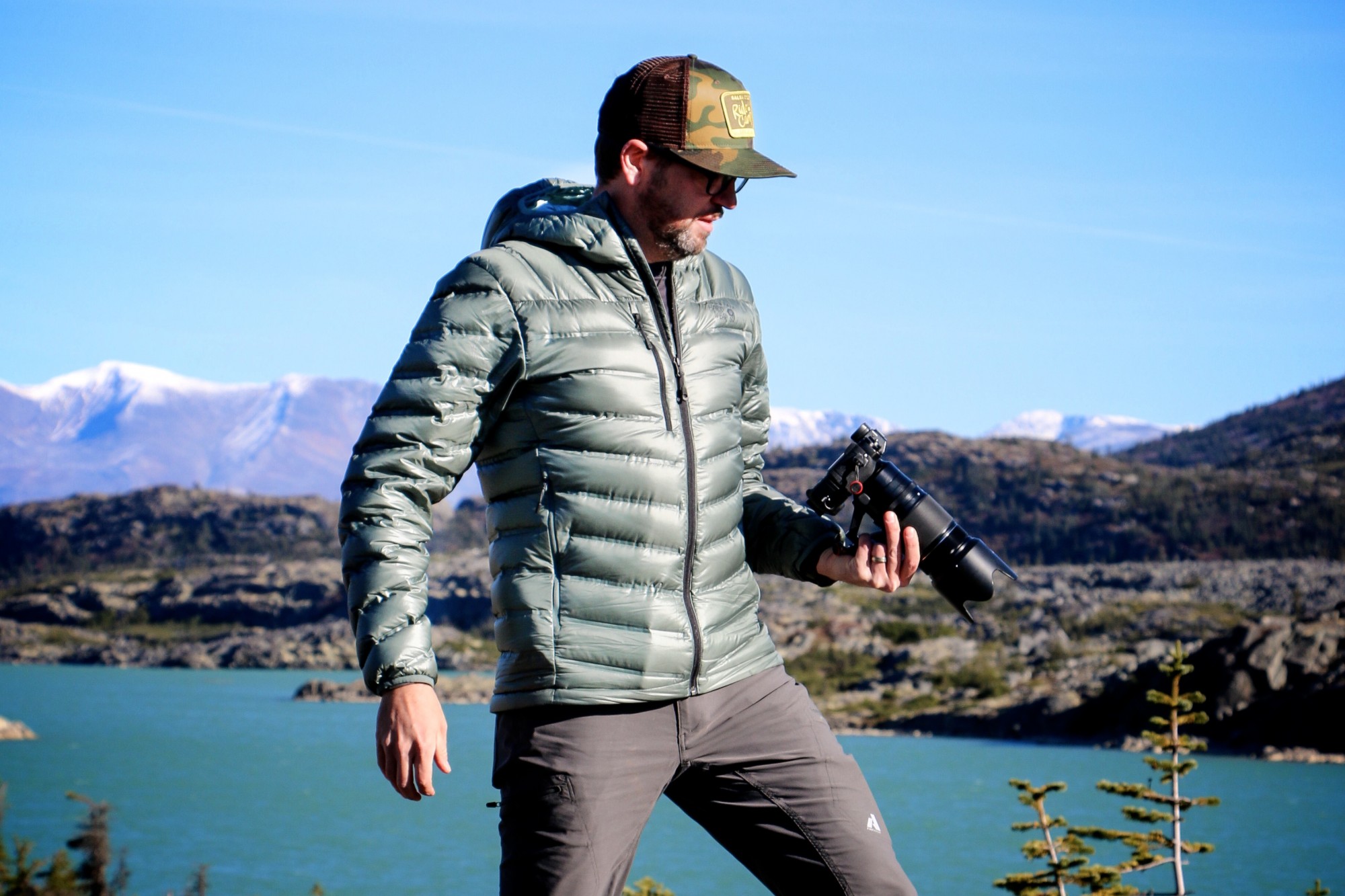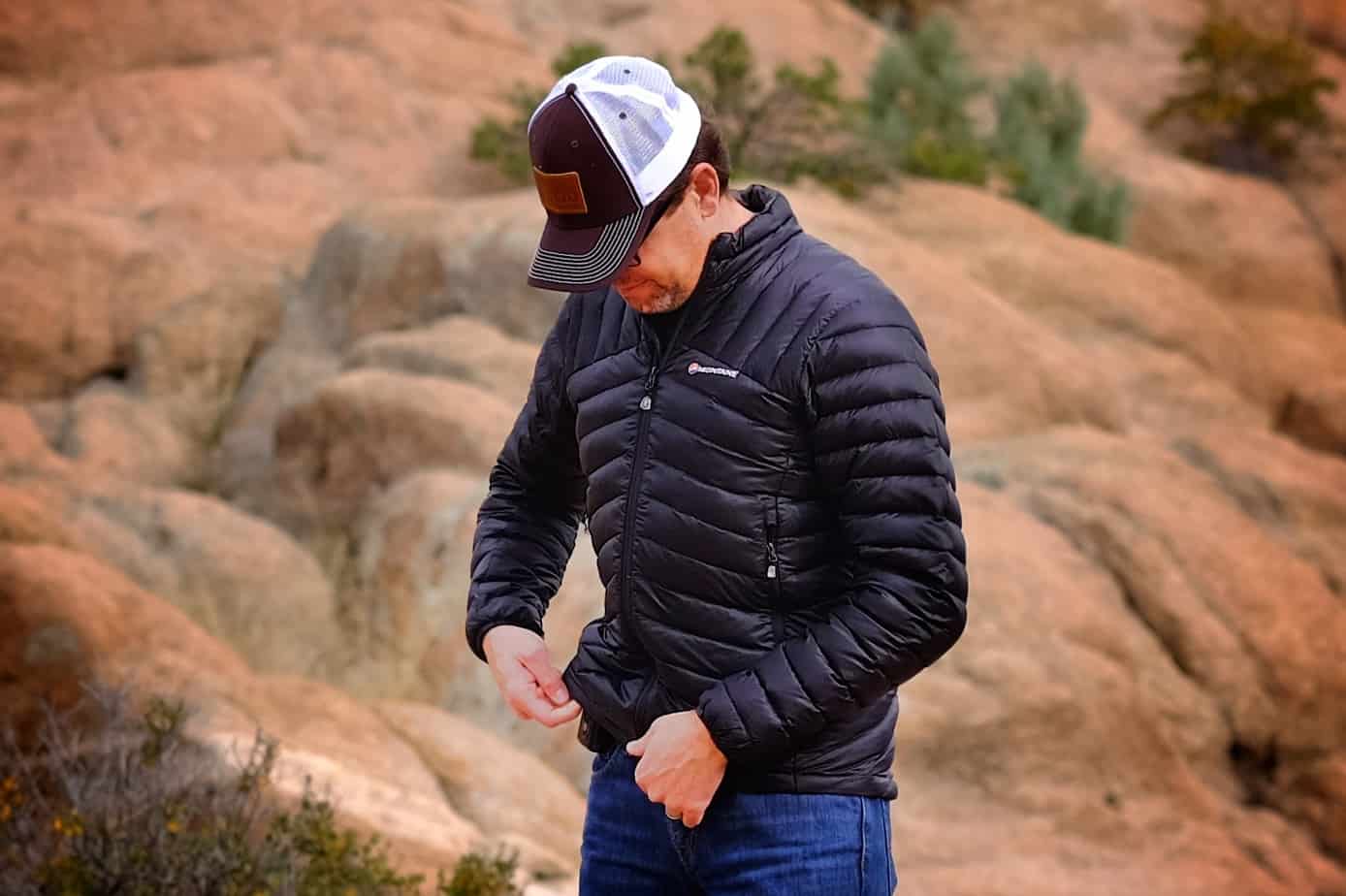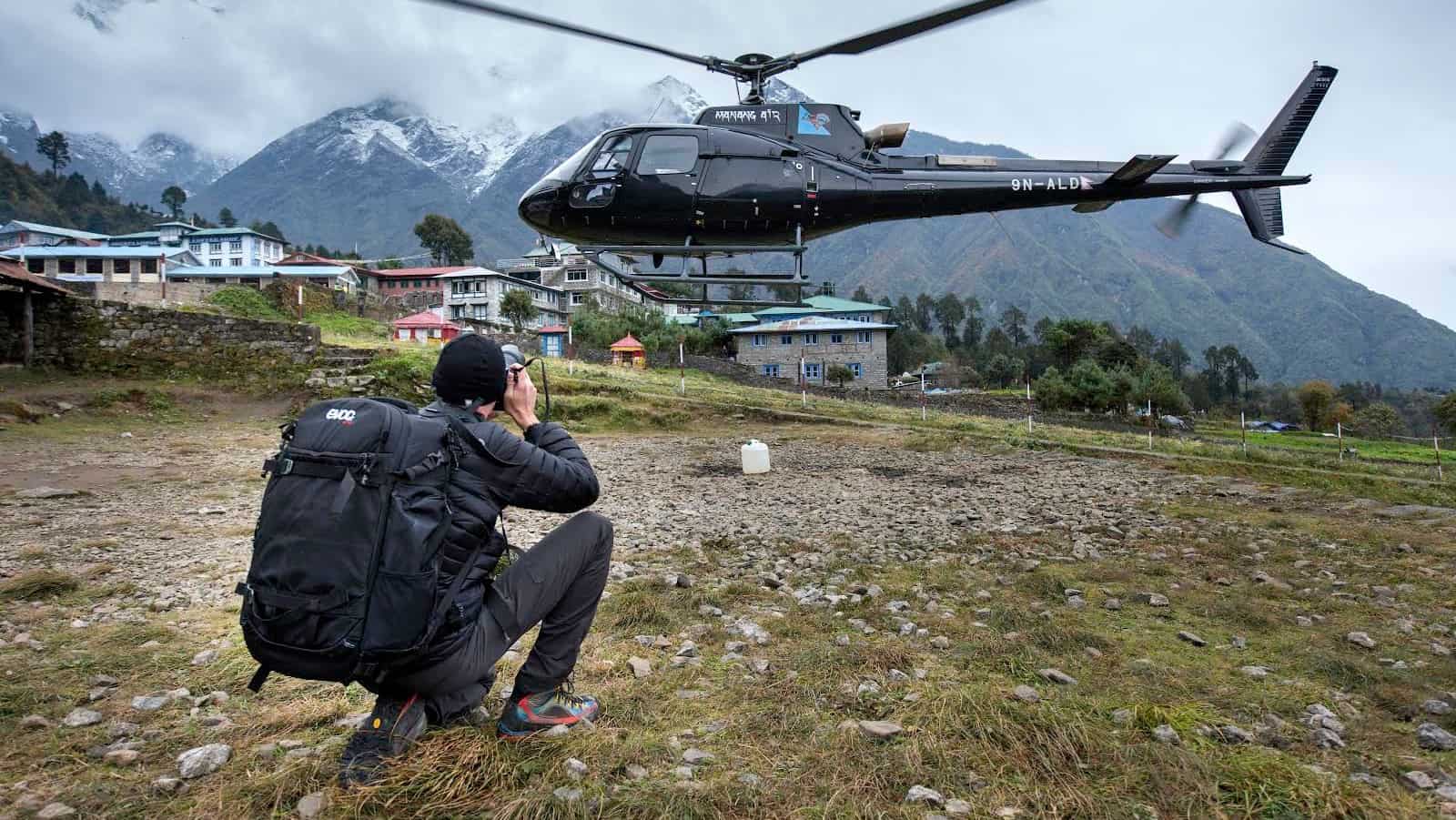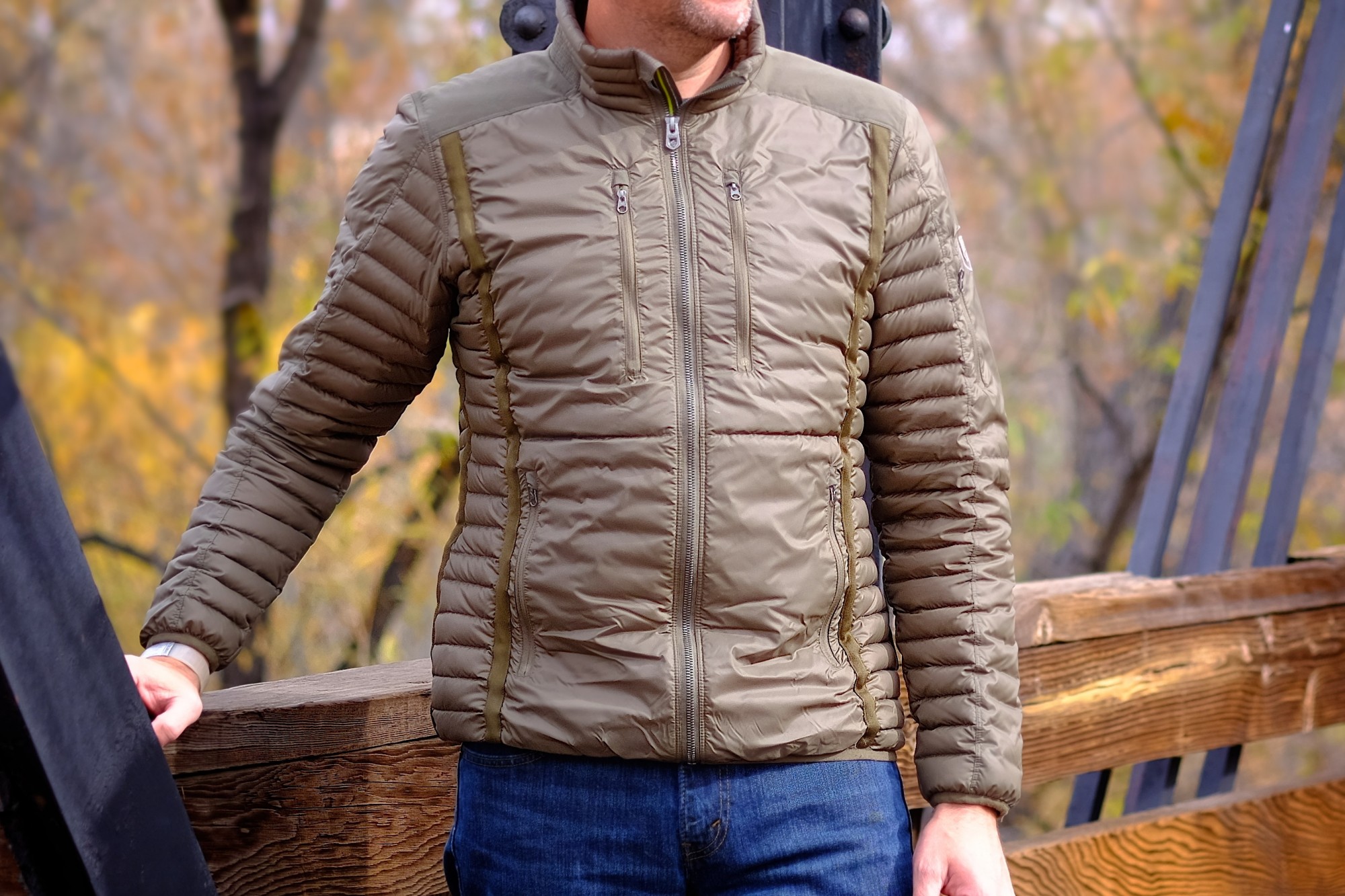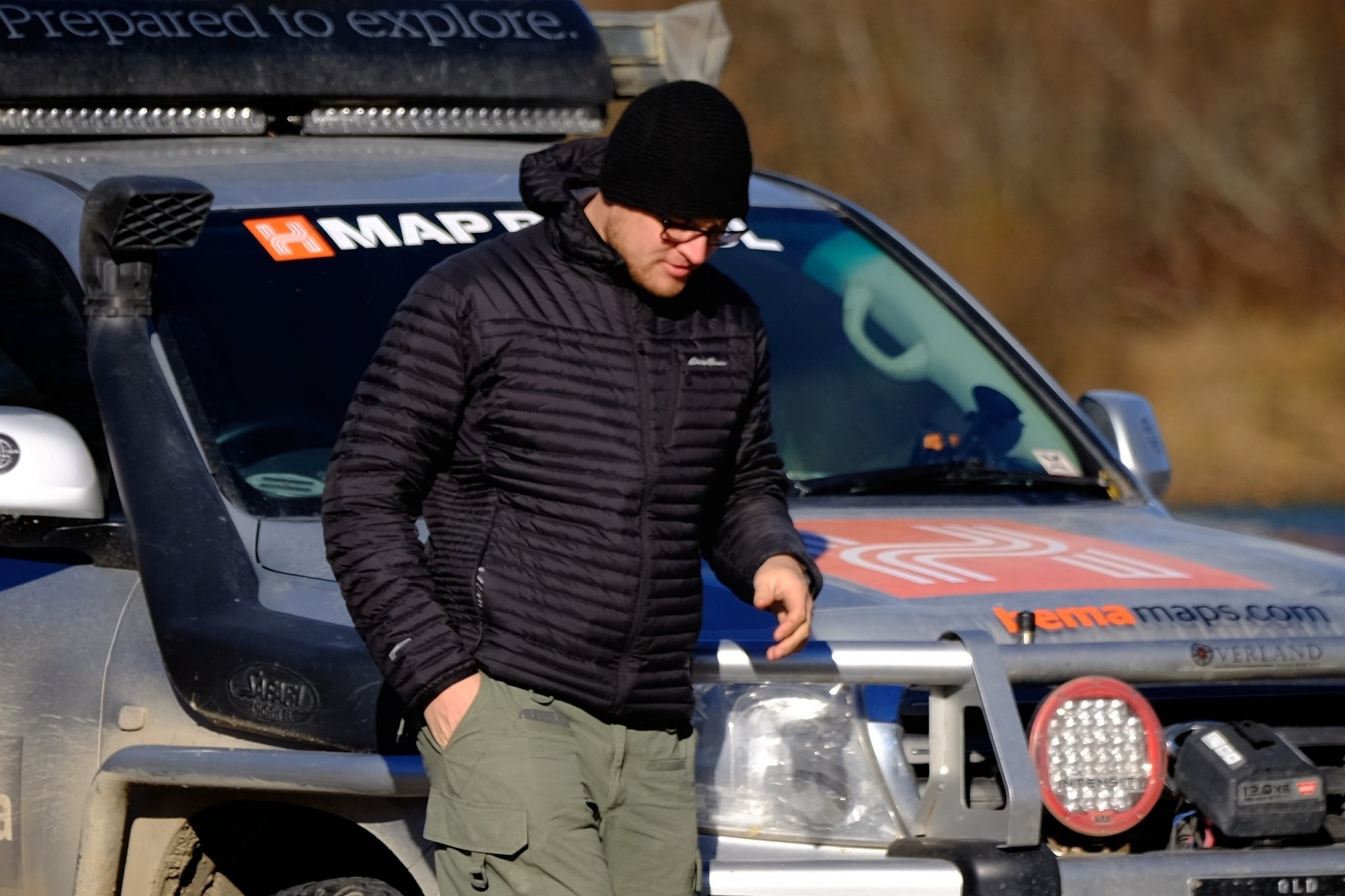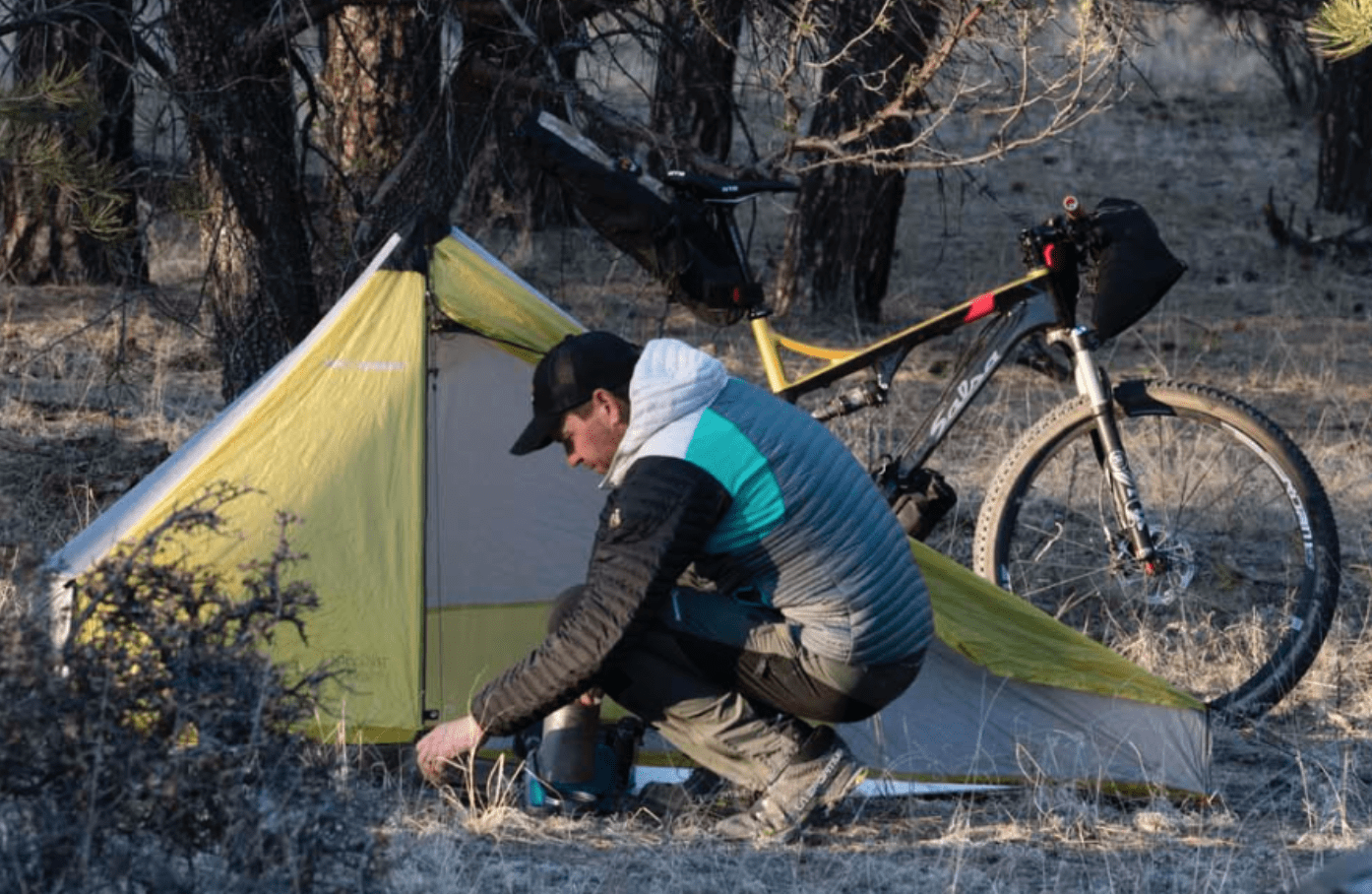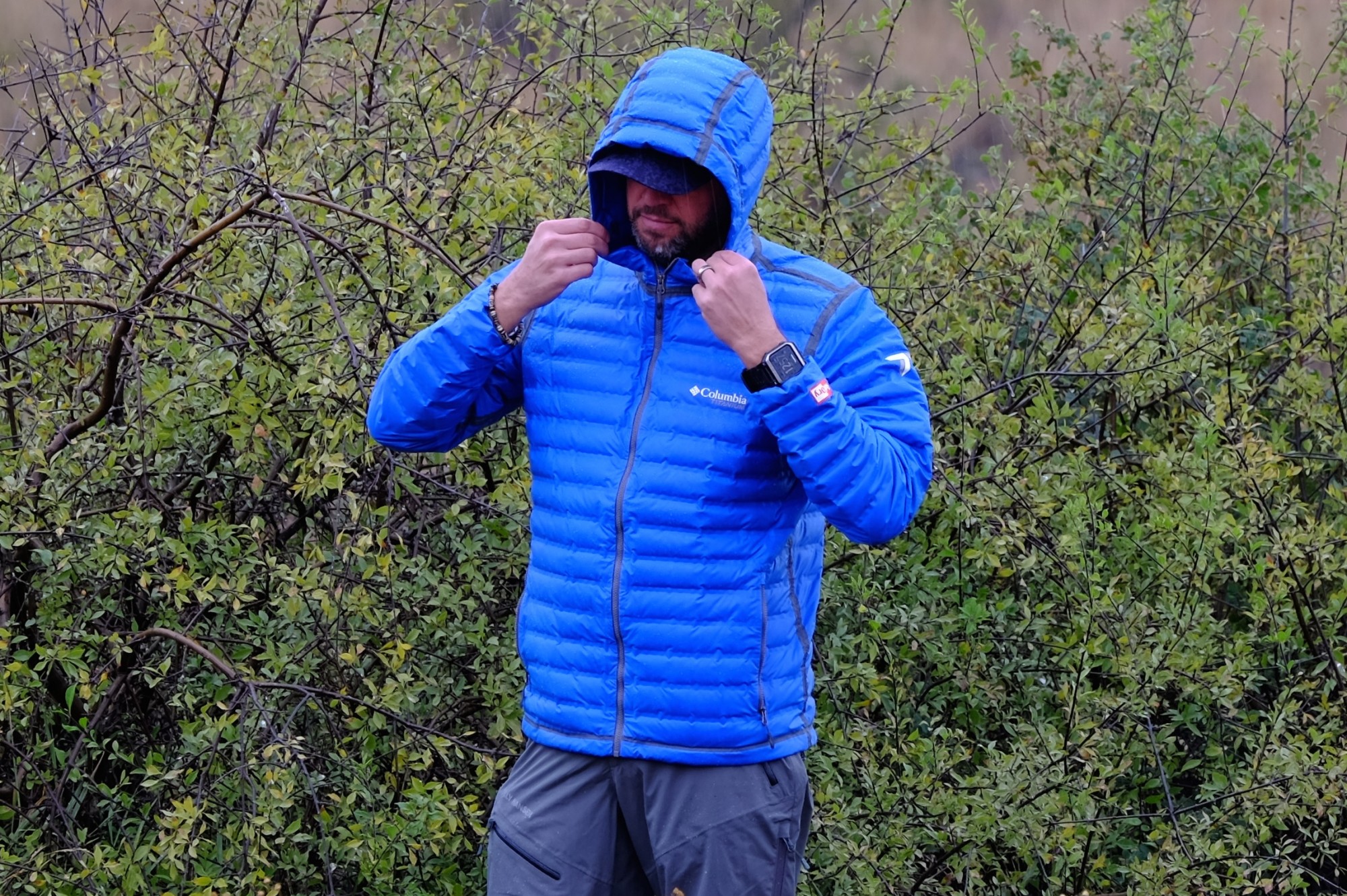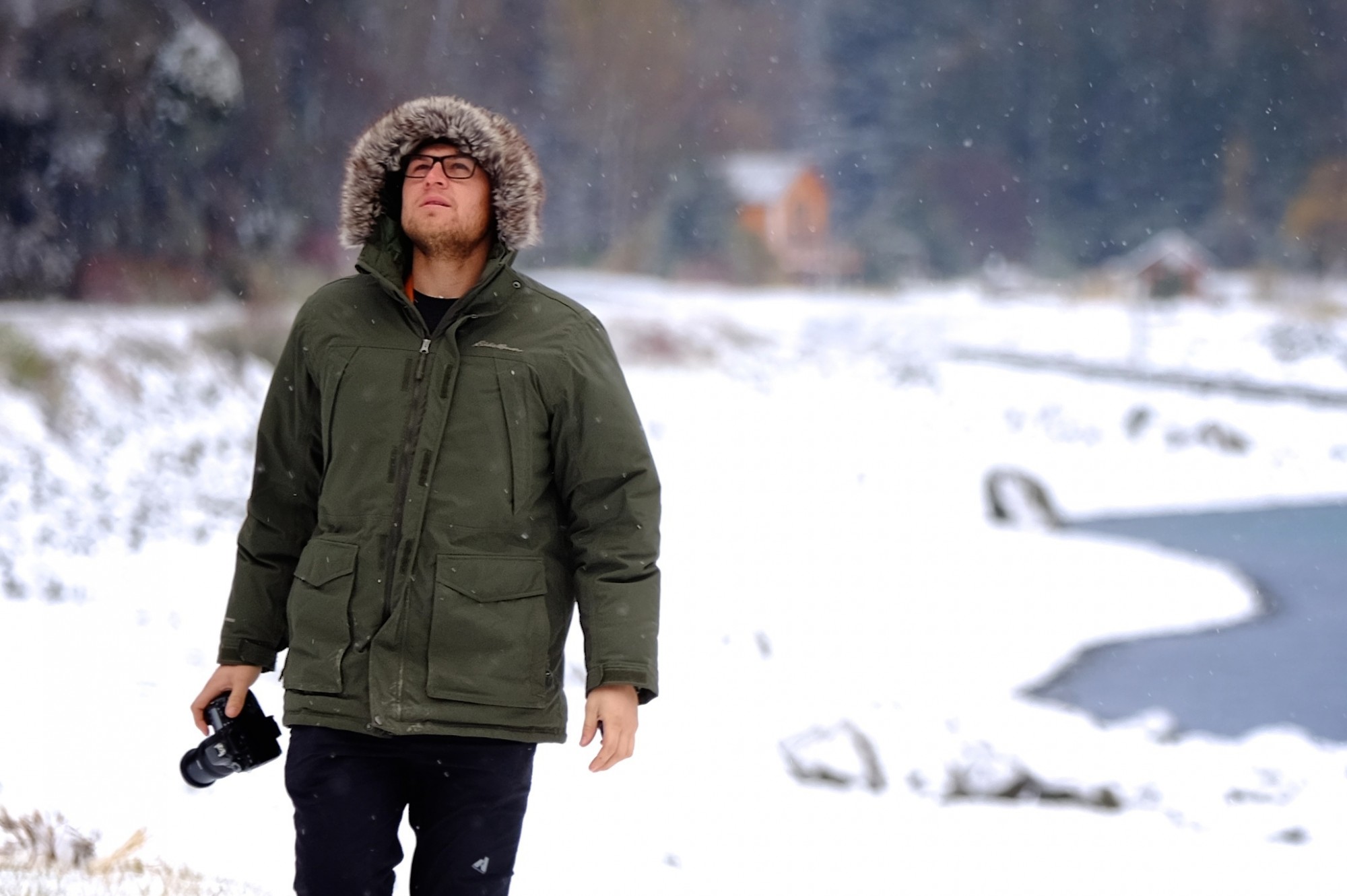Winter is coming. I realize it may not seem like it today as November was unseasonably warm, but make no mistake it will get cold eventually and you will need to stay warm. Like most outdoor enthusiasts, I believe nothing beats the cozy goodness of a down jacket, but knowing which one to buy is not always obvious. Below are some of my favorites of the year, many of them trusted layers I have used on cold forays to the coffee shop or freezing treks amidst the high passes of the Himalayas. A couple of them are brand new products for the season complete with fresh technologies and materials. A few have been around for a season or two and still worth owning. After a recent trip into the first snows of Alaska, I feel all of these layers are worth your hard earned cash.
Mountain Hardwear Streatchdown RS Hooded, $320
The Mountain Hardwear brand isn’t terribly old, and one of their first products to help drive their early sales success was the Sub Zero Down Jacket. I had one and abused the heck out of it over the course of several Alaskan winters. When I first slipped into the Stretchdown RS Hooded, it seemed lightyears ahead of that inaugural coat. In a serendipitous twist of travel fate, I was able to use the Stretchdown while on a recent trip to my old stomping grounds in Alaska.
There are three distinctly unique technologies packed within the Stretchdown RS, the most obvious plays into the name with the use of an omni-directional stretch liner fabric. The baffles are then created using welded seams which Mountain Hardwear says improves warmth by eliminating stitching holes. I’m a bit dubious of that claim, but in my brief testing period I can’t say I noticed the difference between stitches or welds. That’s probably an indicator that it works as advertised. I did observe one advantage of the the welds. They create a smoother outer surface which helps repel moisture. That’s reason enough to advocate for welds.
The chevron-shaped baffles are filled with generous amounts of water-resistant 750-fill Q.Shield down. Non-treated down is the proverbial dead duck, so I expected nothing less of such a high quality layer. With hooded and non-hooded options available in a variety of earthy colors, I opted for the extra head protection because––I can never find my hat.
Although I haven’t used it for long, I’m an instant fan. The stretchy lining permits fluid movement of my arms and torso and I like how the face fabric is soft to the touch and not crinkly or noisy. There is no doubt the outer fabric is more durable than many lighter weight and more calendared nylons, although it still needs to be treated with some care. A testament to how good it is––I seem to wear it when I probably don’t need to. www.mountainhardwear.com Image: Chris Cordes
Montane Featherlite Micro, $220
A little-known brand to most Americans just a few years ago, its safe to say this British label has truly caught on. I now see the Montane logo everywhere with a growing number of pieces working their way into my closet. The Featherlite Micro is their entry into the competitive down jacket segment and has been my second skin since plucking it from a box 15 months ago. With its high quality PERTEX Quantum shell, soft PEAQ nylon lining, and 750+ fill HyperDry water resistant down insulation, this is a high quality jacket at a very reasonable price.
The chevroned baffles along the torso and shoulders offer optimal mobility without collapsing in motion, and the articulated sleeves are cut lean to fit under a shell. Pockets were kept to a minimum with two zippered hand warmers and an inner security compartment. The Featherlite comes with a small stuff sack, and is available in four subtle color choices.
Morning in Lukla, Nepal waiting for my ride into the Himalayas. Image credit: Mark Harris
On my trip to Nepal and the high passes of the Khumbu Valley, the Featherlite Micro was my go-to when evening temps dipped and the first of the season’s snows began to fall. It’s hard to describe, but the Micro is simply––comfortable. The fabrics are soft to the touch, the cut is perfect, and the baffles cooperate with my every movement. This is one of my favorite jackets of the year and I know it will be with me for many seasons to come. www.montane.co.uk Filled with Allied Feather and Down insulation.
Allied Feather and Down sustainable fill
Birds of a feather may flock together, but their down is not all the same. When it comes to sourcing the best down products, we don’t just search for fill-power numbers or shop the latest manufacturer labels. We try our best to find jackets, coats, sleeping bags, and other down-filled products made with insulation products from US-based and family owned Allied Feather and Down. Learn more about their sustainable products at their website. www.alliedfeather.com
KÜHL Spyfire Jacket, $220
Not every jacket is designed exclusively for the demands of the backcountry. You may not want your trip to the local cafe to look like a summit bid on Annapurna, so having a functional and fashion forward jacket is appealing. The KÜHL Spyfire is such a piece and while it is technically sophisticated, it is one of the nicest looking down layers I’ve seen in a very long time.
The KÜHL team has a great eye for style and the Spyfire pulls design elements from nylon flight jackets of the1960s. Whether that was intentional or not I don’t know, but it is very handsome. The 20-denier shell fabric is wrapped over high-quality 800-fill down putting it on par with the nicest backcountry specific jackets on the market. What really sets the Spyfire apart are the copious details of its construction. After a month in the jacket, I was still finding little surprises here and there.
The four front pockets are cavernous and hidden just behind their zipper tracks are reflective accents built into anti-snag webbing. The shoulders are covered in reinforced soft-shell fabric as is the banded collar, places where added durability is desired. Additional features include a zippered pocket on the upper left arm, and an inner mesh pocket. Knit fabric panels under the arms increase mobility and help expel excess heat and vapor. The body-mapped shape keeps the Spyfire close to the user for optimal warmth and lends it a nicely tailored appearance.
As full featured as the Spyfire is, and considering it has added elements like reinforced shoulders and extra pockets, the 14-ounce weight is impressive and makes it viable for even the most weight conscious users. If you want a jacket that looks as much at home at base camp as it does dinner on the town, this is your jacket. www.kuhl.com
Eddie Bauer Microtherm Stormdown Hooded, Custom, $279
It was three years ago when I first reviewed Eddie Bauer’s Microtherm Down Shirt. I have logged countless cold days and nights in that layer and it shows. It kept me warm in the interior of Iceland and the high passes of the Andes. I recently decided to replace it with the updated iteration, and to go one step further, make it my own using Eddie Bauer’s super cool custom jacket builder.
The Microtherm is a thin but warm piece built using tiny baffles filled with high-quality 800-fill water resistant Stormdown. Cut lean to be worn as a mid layer, the Microtherm is ideal for activities where the daily routine involves a constant adding and subtracting of layers. It slips under shell jackets easily and thanks to stretch panels at the back, the mobility is unrivaled. Available with or without a hood, I elected to customize my Microtherm with it. After logging onto the Eddie Bauer custom jacket builder web page, I was able to create a piece unique to me, if just in its aesthetics. With over a million combinations of colors to choose from, I was pretty exciting to finally open the box when it arrived.
I never go bikepacking without this jacket. It’s like second skin I rarely remove.
Given the lightweight layer of insulation afforded by the Microtherm, I have found I use it almost all year long. It’s not so blisteringly warm I can’t use it to cut the chill on a summer morning in the mountains. It packs small, weighs only 398 grams, and looks fantastic. If you are not inclined to pop for the custom Microtherm, you can save a few bucks and buy the standard jacket which comes in a wide range of conservative colors like the all-black jacket pictured above. www.eddiebauer.com Filled with Allied Feather and Down insulation.
Columbia OutDry Ex Gold Down, $250
I am always amazed when people ask if it’s okay to wear a down jacket in a rainstorm. Of course it isn’t. That is unless you have this Columbia jacket.
It isn’t very often a truly innovative piece of technical apparel enters the scene. At this year’s Winter Outdoor Retailer trade show in January, Columbia released a new line of down jackets which genuinely are industry firsts. Using a proprietary outer fabric called OutDry Extreme, their new Ex Down Gold jacket is 100% waterproof. It is certainly the most interesting down layer I have ever used.
Made available to the public in the last few months, my test sample arrived last winter just as a storm hit. After a few minutes standing in a sloppy snow shower, I was impressed. The moisture beaded on the shell instantly. Even after an intense hike, I could not get any inner condensation to accumulate, at least not much. It was so storm worthy, I’d have no hesitation wearing the EX Gold jacket in a torrential downpour. Fully taped with a generously sized hood, the EX Gold is ready for weather’s absolute worst, and thanks to the design of the fabric, will never require additional applications of a DWR water repellant coating. The 650-fill down is blown into baffles constructed with radio-frequency welds instead of traditional threaded stitches adding to the waterproofness.
As amazing as the weather thwarting performance is, there are some drawbacks to the fabric. The OutDry material is heavy. It isn’t terribly soft to the touch or supple. It almost feels like rubber or PVC covered poly and the cut is slightly boxy. It feels a little clunky, and the articulation of the sleeves could be improved. I will admit the outer fabric is substantial and not nearly as delicate as most. For those who need a down jacket they can treat like a soft-shell or more durable outer, the EX Gold is the ticket. Offsetting the extra weight is the ability to leave your waterproof outer shell at home. For those travelers in wet and cold regions of the world, this might be a piece to add to your short list. www.columbia.com
Eddie Bauer Superior Down Parka, $329
Here’s your fun fact for the day. Eddie Bauer is credited with the invention of the down jacket. I’m sure that surprises a lot of people as his name is also synonymous with khaki pants and throw pillows, but he got his start making hardcore mountaineering gear. Today the Eddie Bauer brand still produces plenty of high quality pieces for extreme pursuits like the Superior Down Parka. If you get cold easily, this is your huckleberry.
Temperature ratings are subjective and influenced by a dozen variables, but the -40ºF (moderate activity) rating on the Superior Down Parka doesn’t seem overstated. Cut to parka length with a full hood including a detachable faux-fur ruff, it also has knit lined cuffs with velcro closures and a full-length storm flap on the main zipper. All of those small details help seal in the heat and shut out the cold.
Filled with 650-fill down insulation, the outer fabric is made of a heavy-duty brushed nylon. The quilted liner fabric is calendared to a high sheen which aids in mobility as it prevents under layers from bunching or binding. Large chest and lower hip pockets keep small items accessible and a drawstring at the waist helps hold the parka close to the body.
Our own Chris Cordes just traveled to the tippy-top of Alaska during the onset of winter with his Superior Parka. As a native Texan, he appreciated the extra warmth it provided. www.eddiebauer.com Filled with Allied Feather and Down insulation.
My favorite non-down alternative: Helly Hansen Paramount Insulated Soft Shell, $200
I think we all agree, down jackets are great. They’re also somewhat delicate as most of them achieve their ethereally light weigh with the use of thin shell fabrics. There are times when a more durable option is best. For those applications I have become an ardent fan of the Paramount Insulated Softshell from Helly Hansen. Softshell jackets were originally created to offer alpinists and other backcountry athletes a layer they could use in situations prone to damage lighter materials. On the downside, not many of them are very warm. The Paramount is quite toasty thanks to a healthy dose of Primaloft insulation. While it may not be as light as a down jacket, it is rugged, comfortable, and extremely warm.
With slender sleeves and cut short at the waist, the Paramount is shaped appropriately to fit under outer layers, but it makes for an ideal weather-defying shell all on its own. Not fully waterproof, it is highly water resistant and after standing in an icy wind storm on a high mountain pass in Alaska, I can attest to its ability to fend off a cold blow. The insulated hood is nicely fitted and makes for a warm refuge when the temps get fierce. With two hand warmer pockets and another at the chest, there isn’t much to the Paramount, and that might be what I like about it most.
The sleeves could be too slim for some users, but any bigger and the jacket would be difficult to fit under a waterproof shell layer. The cuffs have velcro closures to seal out cold air and the heavy gauge zipper is easy to use with gloved hands. At just $200 it offers a great deal of bang for the buck and will undoubtedly survive many winters of hard use. www.hellyhansen.com image: Chris Cordes



